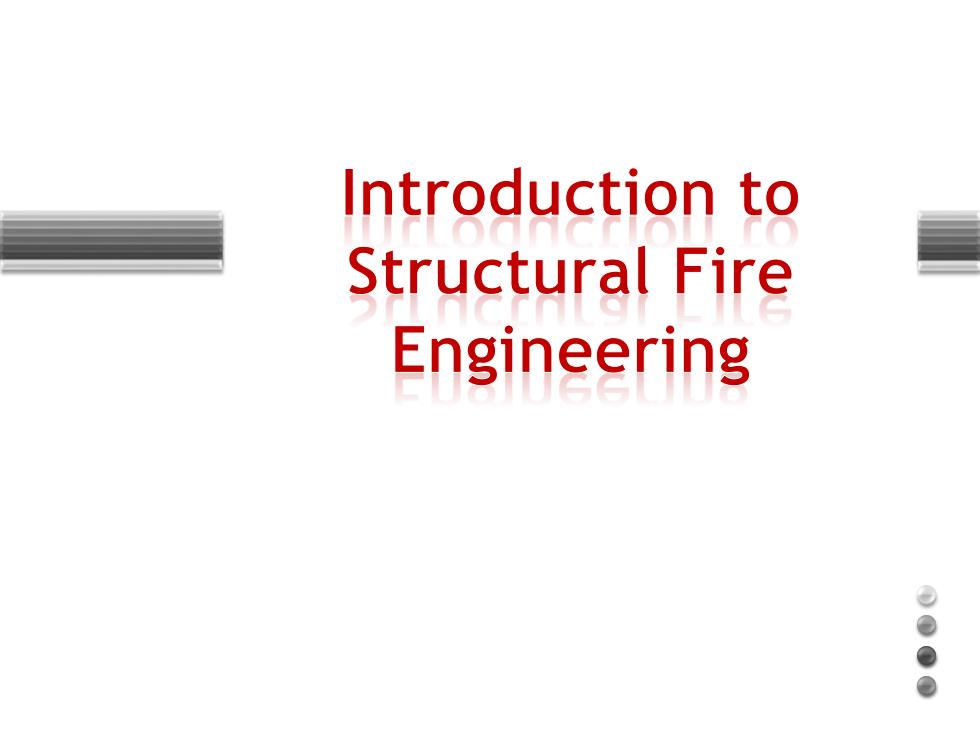
Introduction to Structural Fire Engineering
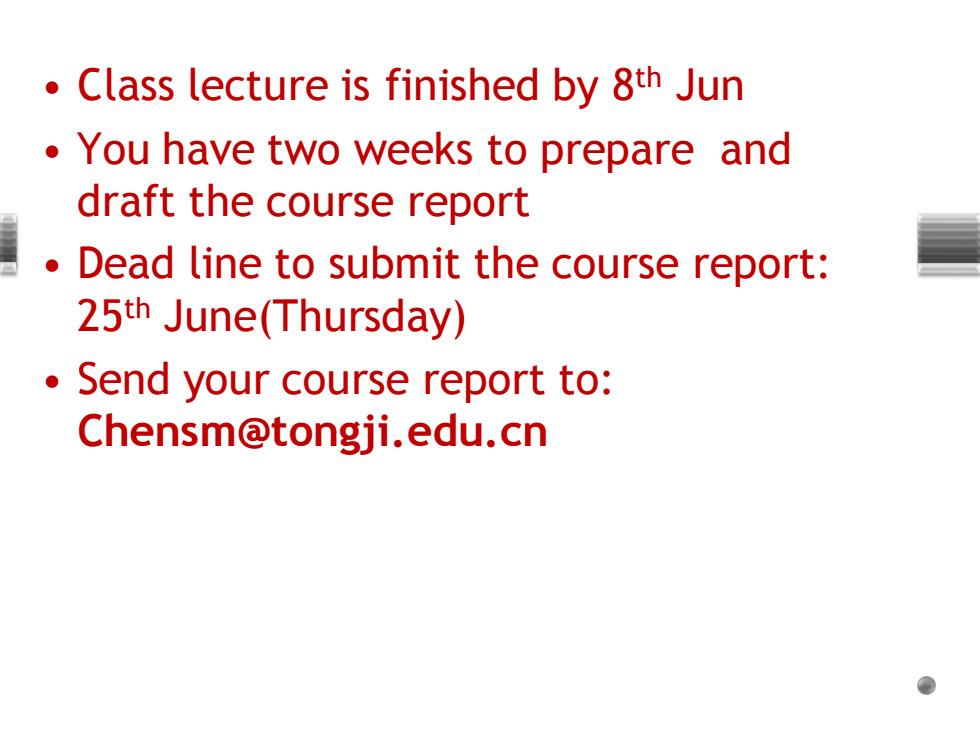
Class lecture is finished by 8th Jun You have two weeks to prepare and draft the course report Dead line to submit the course report: 25th June(Thursday) Send your course report to: Chensm@tongji.edu.cn
• Class lecture is finished by 8th Jun • You have two weeks to prepare and draft the course report • Dead line to submit the course report: 25th June(Thursday) • Send your course report to: Chensm@tongji.edu.cn
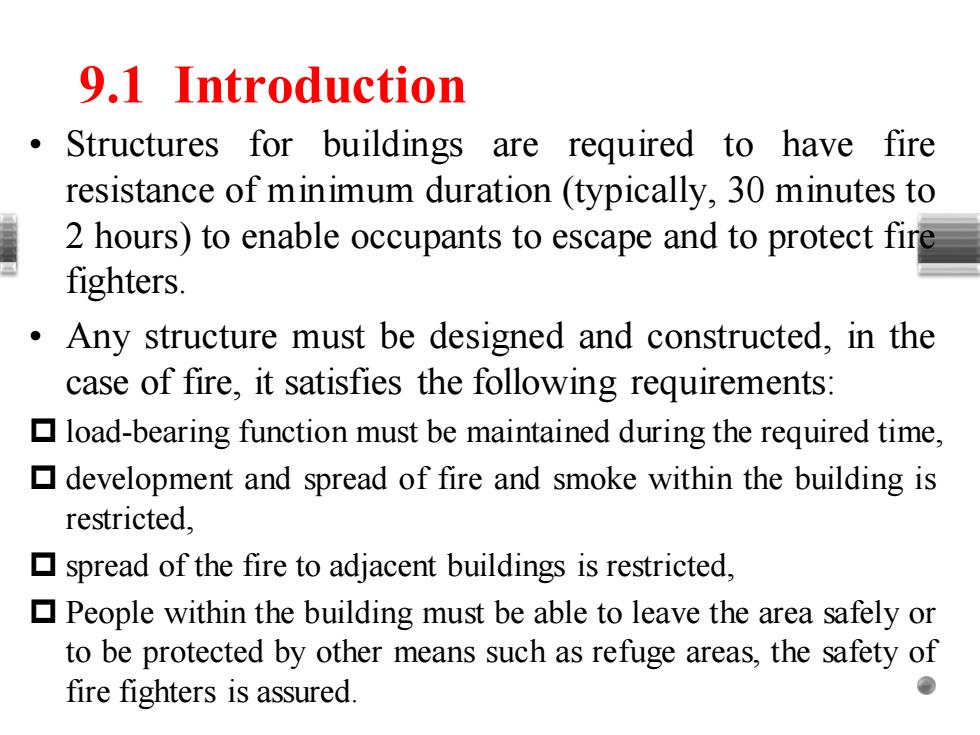
9.1 Introduction Structures for buildings are required to have fire resistance of minimum duration(typically,30 minutes to 2 hours)to enable occupants to escape and to protect fire fighters. Any structure must be designed and constructed,in the case of fire,it satisfies the following requirements: load-bearing function must be maintained during the required time, development and spread of fire and smoke within the building is restricted, spread of the fire to adjacent buildings is restricted, People within the building must be able to leave the area safely or to be protected by other means such as refuge areas,the safety of fire fighters is assured
9.1 Introduction • Structures for buildings are required to have fire resistance of minimum duration (typically, 30 minutes to 2 hours) to enable occupants to escape and to protect fire fighters. • Any structure must be designed and constructed, in the case of fire, it satisfies the following requirements: load-bearing function must be maintained during the required time, development and spread of fire and smoke within the building is restricted, spread of the fire to adjacent buildings is restricted, People within the building must be able to leave the area safely or to be protected by other means such as refuge areas, the safety of fire fighters is assured
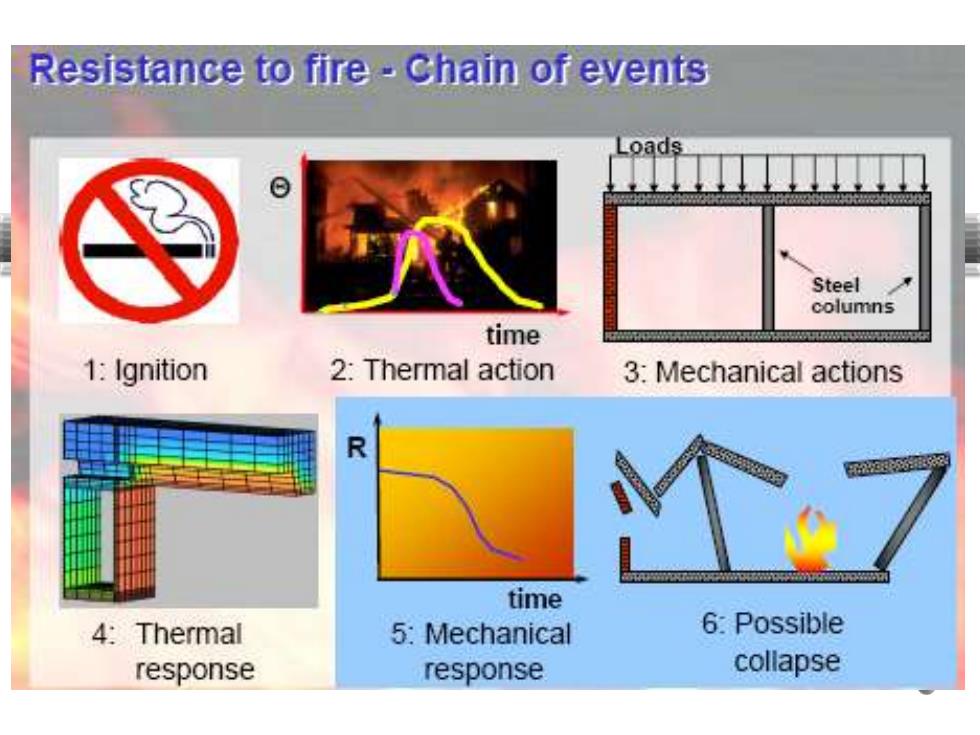
Resistance to fire-Chain of events ⊙ Steel columns time 1:Ignition 2:Thermal action 3:Mechanical actions time 4:Thermal 5:Mechanical 6:Possible response response collapse
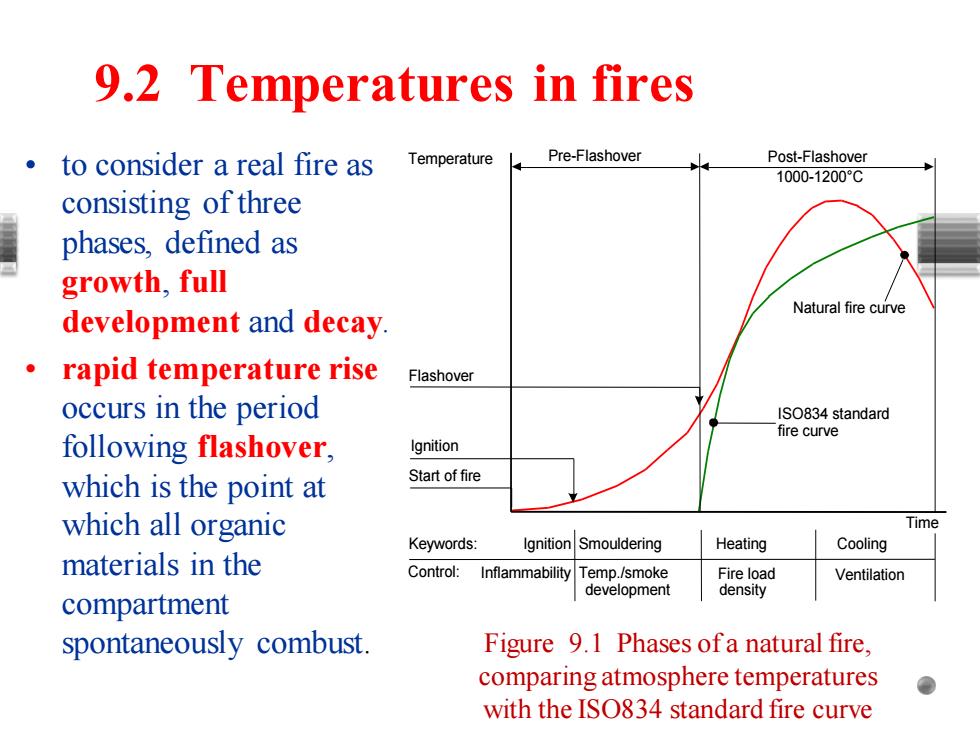
9.2 Temperatures in fires to consider a real fire as Temperature Pre-Flashover Post-Flashover 1000-1200°C consisting of three phases,defined as growth,full Natural fire curve development and decay. rapid temperature rise Flashover occurs in the period IS0834 standard fire curve following flashover, Ignition which is the point at Start of fire which all organic Time Keywords: IgnitionSmouldering Heating Cooling materials in the Control:Inflammability Temp./smoke Fire load Ventilation development density compartment spontaneously combust. Figure 9.1 Phases ofa natural fire, comparing atmosphere temperatures with the ISO834 standard fire curve
• to consider a real fire as consisting of three phases, defined as growth, full development and decay. • rapid temperature rise occurs in the period following flashover, which is the point at which all organic materials in the compartment spontaneously combust. 9.2 Temperatures in fires Ignition Smouldering Pre-Flashover Post-Flashover 1000-1200°C Flashover Ignition Start of fire Keywords: Heating Cooling Time Control: Inflammability Temp./smoke development Fire load density Ventilation ISO834 standard fire curve Natural fire curve TemperatureFigure 9.1 Phases of a natural fire, comparing atmosphere temperatures with the ISO834 standard fire curve
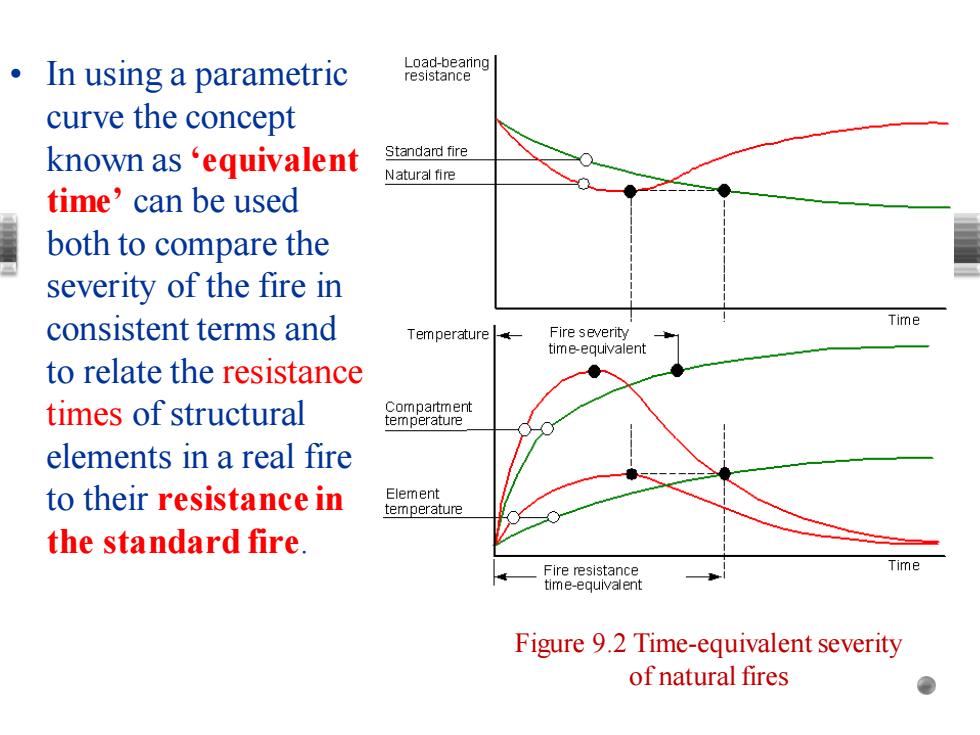
。In using a parametric Load-bearing resistance curve the concept known as‘equivalent Standard fire Natural fire time'can be used both to compare the severity of the fire in consistent terms and Time Temperature Fire severity time-equivalent to relate the resistance times of structural Compartment temperature elements in a real fire to their resistance in Element temperature the standard fire. Fire resistance ime time-equivalent Figure 9.2 Time-equivalent severity of natural fires
• In using a parametric curve the concept known as ‘equivalent time’ can be used both to compare the severity of the fire in consistent terms and to relate the resistance times of structural elements in a real fire to their resistance in the standard fire. Figure 9.2 Time-equivalent severity of natural fires
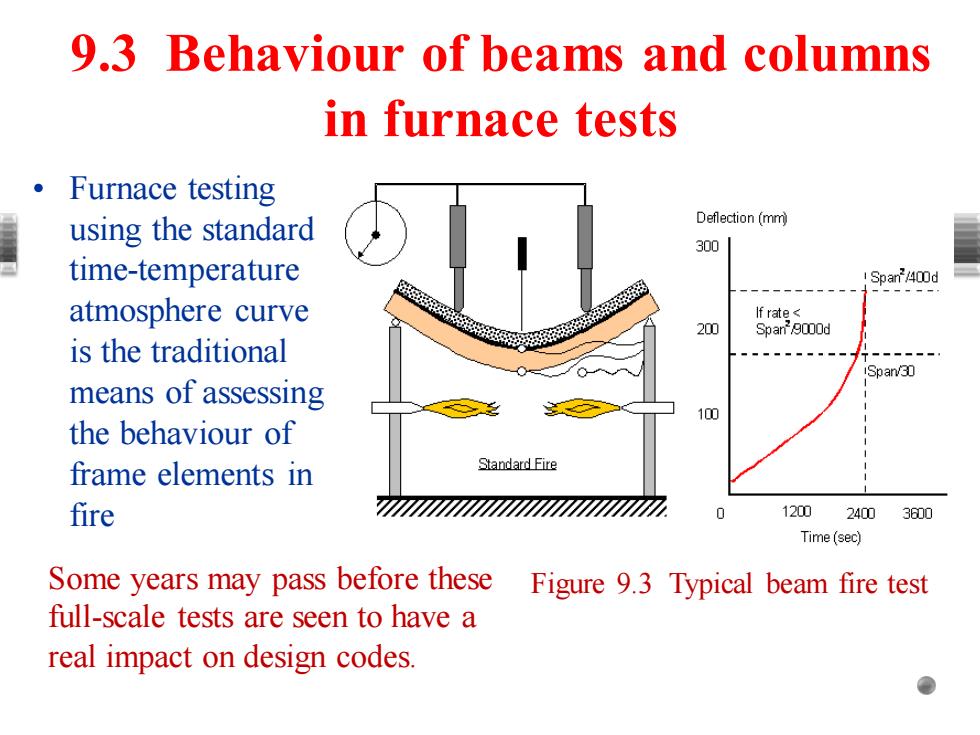
9.3 Behaviour of beams and columns in furnace tests 。Furnace testing using the standard Deflection(mm 300 time-temperature !Span/400d atmosphere curve If rate< 20m Span/9000d is the traditional Span/30 means of assessing 100 the behaviour of frame elements in Standard Fire fire 12002400 3600 Time(sec) Some years may pass before these Figure 9.3 Typical beam fire test full-scale tests are seen to have a real impact on design codes
• Furnace testing using the standard time-temperature atmosphere curve is the traditional means of assessing the behaviour of frame elements in fire 9.3 Behaviour of beams and columns in furnace tests Some years may pass before these Figure 9.3 Typical beam fire test full-scale tests are seen to have a real impact on design codes
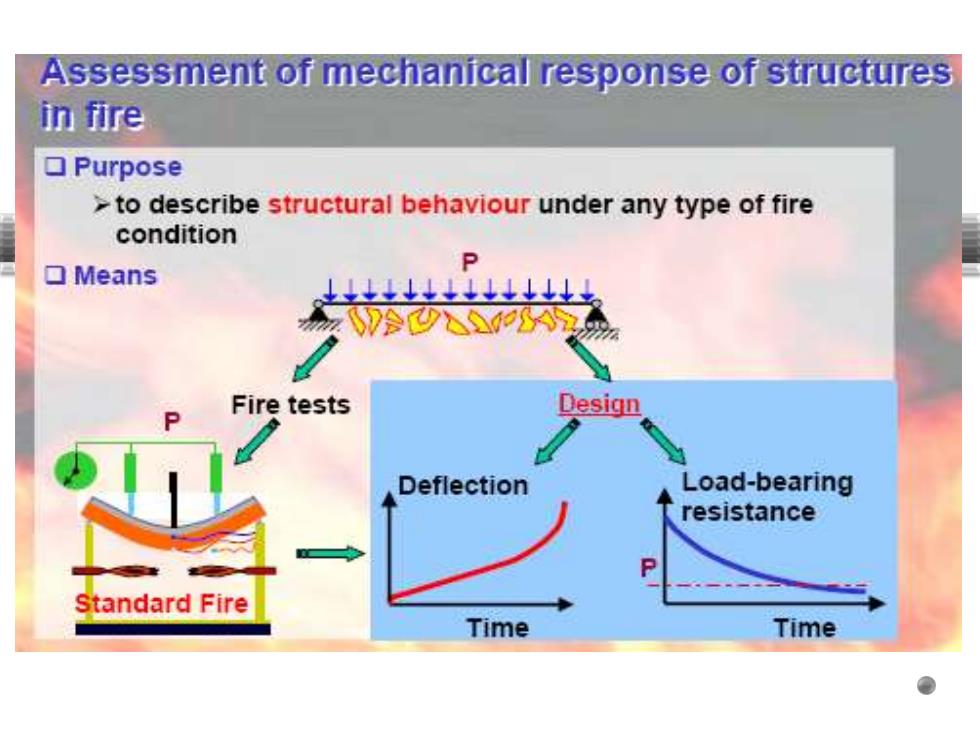
Assessment of mechanical response of structures in fire ▣Purpose >to describe structural behaviour under any type of fire condition ▣Means Q Fire tests Design Deflection Load-bearing resistance Standard Fire Time Time
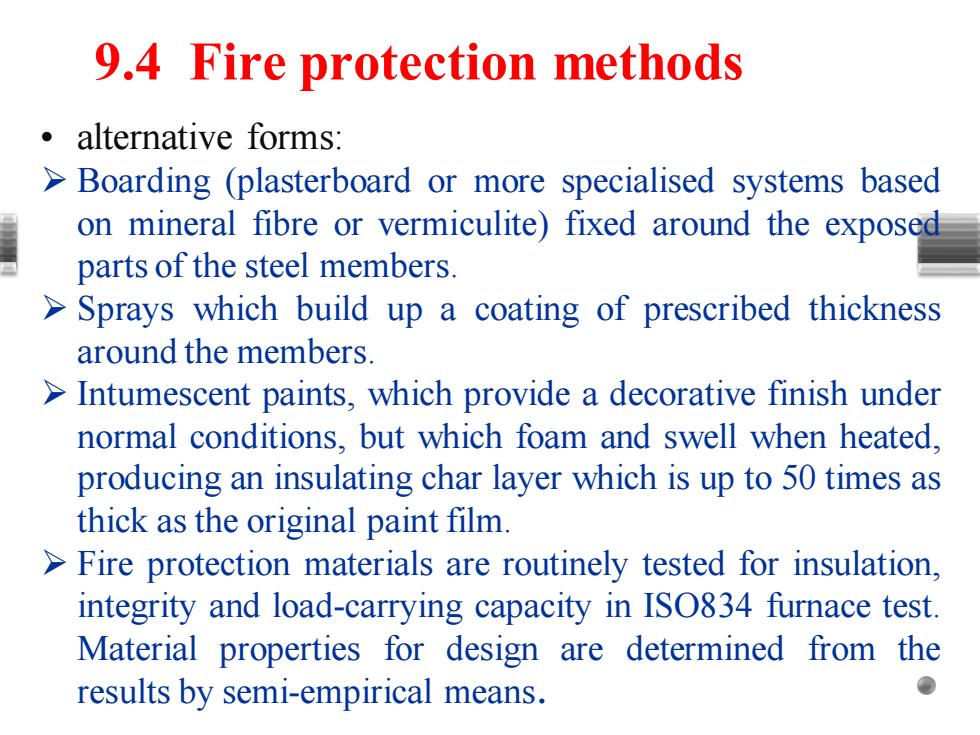
9.4 Fire protection methods 。alternative forms: >Boarding (plasterboard or more specialised systems based on mineral fibre or vermiculite)fixed around the exposed parts of the steel members. >Sprays which build up a coating of prescribed thickness around the members >Intumescent paints,which provide a decorative finish under normal conditions,but which foam and swell when heated, producing an insulating char layer which is up to 50 times as thick as the original paint film. >Fire protection materials are routinely tested for insulation, integrity and load-carrying capacity in ISO834 furnace test. Material properties for design are determined from the results by semi-empirical means
• alternative forms: ➢ Boarding (plasterboard or more specialised systems based on mineral fibre or vermiculite) fixed around the exposed parts of the steel members. ➢ Sprays which build up a coating of prescribed thickness around the members. ➢ Intumescent paints, which provide a decorative finish under normal conditions, but which foam and swell when heated, producing an insulating char layer which is up to 50 times as thick as the original paint film. ➢ Fire protection materials are routinely tested for insulation, integrity and load-carrying capacity in ISO834 furnace test. Material properties for design are determined from the results by semi-empirical means. 9.4 Fire protection methods
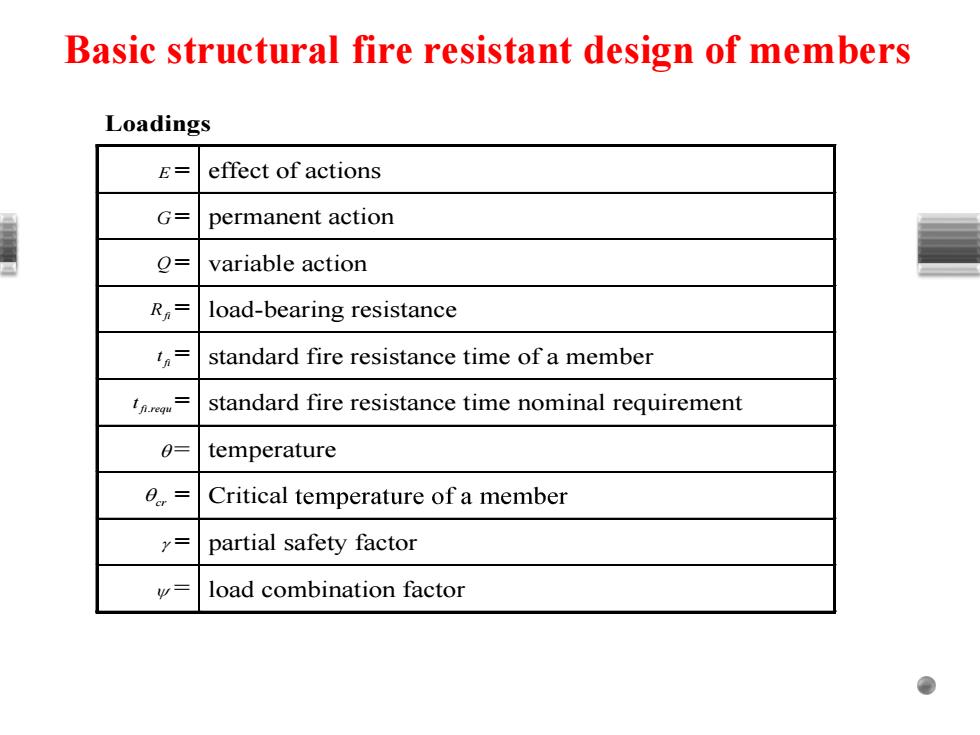
Basic structural fire resistant design of members Loadings E- effect of actions G= permanent action 0- variable action Ra三 load-bearing resistance 1n= standard fire resistance time of a member In.requ standard fire resistance time nominal requirement 0= temperature 0.m= Critical temperature of a member y= partial safety factor load combination factor
Basic structural fire resistant design of members Loadings E = effect of actions G = permanent action Q = variable action Rfi = load-bearing resistance fi t = standard fire resistance time of a member fi requ . t = standard fire resistance time nominal requirement temperature cr = Critical = partial safety factor load combination factor